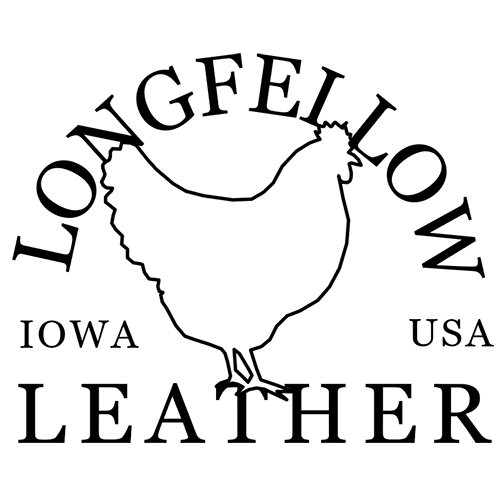The Artisans
And, when we say us, it is just me (Bob Gassman) and my partner and our three kids. We live in the historic Longfellow neighborhood of Iowa City, Iowa, amidst the vast American Heartland. Our families have lived in this beautiful part of the country for over a century, and after some youthful travels we officially established our own family here in 2009. This is a special place in the world and a little known wonder.
We strive for self-resilience and have established an abundant urban homestead with our neighbors and community. During the warm months we work in our gardens and practice animal husbandry, and we settle down to handicraft and music making when the cold sets in. The Iowa climate affords plenty of cozy evenings to gather with family and friends to reflect on the past seasons while working on ones craft. For me, crafting leather goods began as a winter pastime, experimenting with leather scraps and crafting pocket goods for friends.


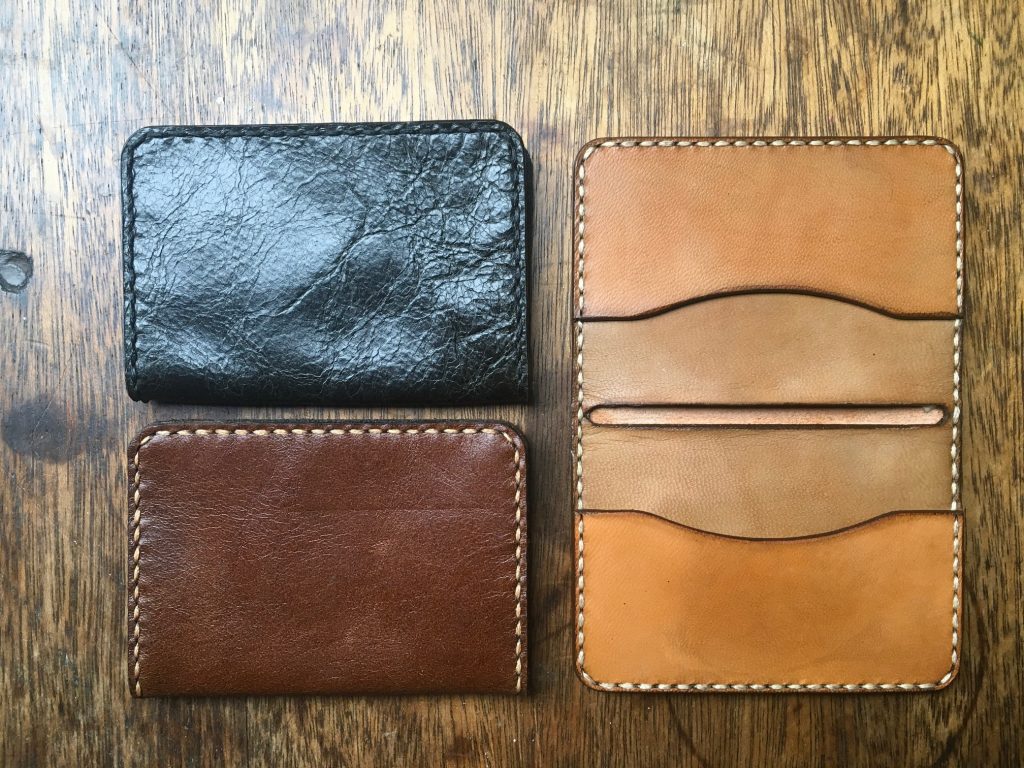
Impetus
I’m trained as an architect, and work as a designer for Neumann Monson Architects, and as a teacher at the University of Iowa. I love to learn, and leather work is one of the many hand crafts that offers an abundant learning opportunity. My father encouraged me and my siblings to work with leather from a young age. Along with gardening and tinkering, stamping on hides was one of our earliest forms of entertainment. As an adult, I enjoy incorporating pragmatic detailing into leather work, while pushing proportions to achieve maximum economical usefulness.
The design and construction industry relies on material samples to provide designers and consumers with an accurate depiction of finish and overall material quality. Once these samples are reviewed, there is little use for them afterwards. While these samples are typically small compared to the quantities used in a building project, they are nonetheless a potential source of waste. However, many quality samples are large enough to still have a use, especially when pieced together. In the case of leather samples (typically provided to consider upholstery), many of these furniture-sized swatches provide enough material to create various pocket-sized objects, which is how I began to craft our initial line of leather goods.



The Goods
We pride ourselves in the design and craft of these products. Each piece and proportion is carefully considered, even down to the stitch spacing, to provide a utilitarian object that serves its purpose. We spend a lot of time with these items, cutting, stitching, and burnishing each piece of leather. Take a close look at the saddle stitching on any of these pieces, and you’ll know what we mean; a level of craft and design that you’ll want to share with others.
Where We’re Going
As we continue to expand our line of leather goods, we’ve been striving to craft items that are as regional as possible: Midwest hides, Midwest tanneries, and Midwest design and craftsmanship. While we value the reuse of materials, relying on leather samples and reclaimed leather can be unpredictable, resulting in products of varying quality. We’re working toward using American, vegetable tanned leather with 100% brass hardware. At this point, we exclusively use leather from the Hemann Oak Tannery in St. Louis, Missouri, the Midwest’s most regional source for premium, responsible leather.
Branding and Logo
The name Longfellow Leather is primarily derived from our location, the historic Longfellow neighborhood of Iowa City, but I am also drawn to the poetry of Henry Wadsworth Longfellow. My family enjoys making music with each other, and a few years ago I began singing the song “I Heard the Bells on Christmas Day,” which is based on the 1863 poem “Christmas Bells” by American poet Longfellow. Some of those lines really get you:
And in despair I bowed my head;
“There is no peace on earth,” I said;
“For hate is strong,
And mocks the song
Of peace on earth, good-will to men!“
Then pealed the bells more loud and deep:
“God is not dead, nor doth He sleep;
The Wrong shall fail,
The Right prevail,
With peace on earth, good-will to men.”
The Chicken is a gregarious creature, and we too are happy to be part of our community and surrounded by many friends and like minds. Our backyard chickens provide for our family as we work to attain self sufficiency, and to them we are grateful.



Thoughts on Leather
When I started working with leather, I was primarily crafting items out of various leather scraps that I had acquired. The scraps came in a range of different colors, textures, thicknesses, flexibility, smells, and feels, and I quickly realized that I knew nothing about leather, except that it was the hide of an animal. Right?
After working through a pile of different leathers, I started to notice that there was something really unnatural about many of these materials. Some of the leathers seemed really no better than plastic. I looked down at my own two hands, the skin on my arms, and I pondered the creases, the color, the wrinkles, and I thought, “Why are so many of these leathers bright pink, green, super smooth, bumpy. Is this really leather?”
After a bit of research, you can find out that many of these materials are leather, the tanned hide of an animal, but the majority of leather that we encounter is highly processed to provide a manufactured, consistent product. Much of the leather I had been working with seemed like plastic, because it had been processed to a point that there were no longer any natural characteristics of the living being that it came from. The material was potentially more plastic than leather. What we find out is that a bulk of world-wide leather has been painted, texturized, smoothed, and plasticized to look like any finish desired.

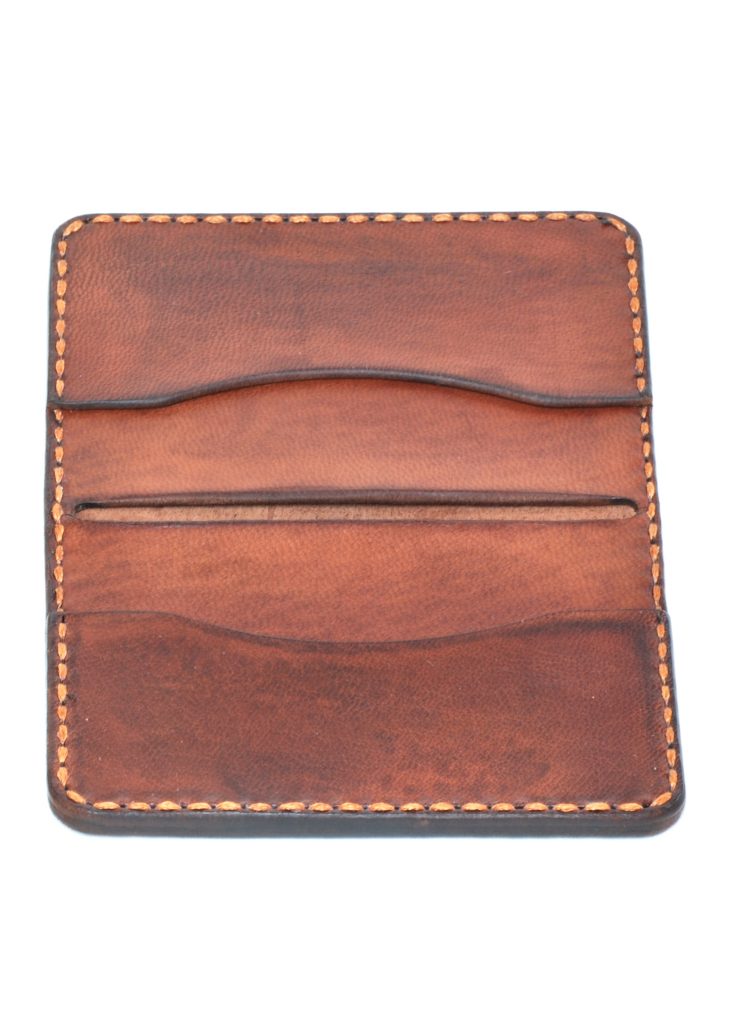
Vegetable Tanned Leather
After crafting with a variety of materials, I discovered one big takeaway: There are two primary types of leather, characterized by the tanning process that was used to turn the hide into leather, known as chrome-tanned or vegetable tanned. Vegetable tanned leather is the finest, most natural, and environmentally friendly leather that you can get, and accounts for around 10% of all leather produced. Chrome-tanned leather is a process of mass production and results in many of the unnatural, plasticky leathers.
In the Midwest, we are very lucky to have the Hermann Oak Tannery, one of the most renowned vegetable tanneries in the world, located in St. Louis, Missouri. As we continue to craft our leather goods, we will be using leather exclusively from Hermann Oak, because this is the best you can get. We value the amazing quality of this leather, and the Hermann Oak Tannery is our most regional resource for responsible leather.
So, why do we feel that vegetable tanned leather from Hermann Oak is so important? Because we’re the type of people who want to know where our food comes from, how it was raised, how it was treated, if it will be good and healthy for us. Leather is actually a byproduct of the food industry; cattle are not harvested for leather, but for meat. If you are a meat eater, know where your meat comes from; if you support the use of leather, then know where your leather comes from and how it was made.
By using leather from Hermann Oak, you can have confidence that the cattle are all North American steer, born, raised, and processed in the USA. Many of the hides come from the Midwest region of the United States and are shipped to the Hermann Oak Tannery. Once hides are vegetable tanned, the leather goes to a distributor. We acquire our leather from Springfield Leather Company, also located in Missouri. Below is a map of our material sourcing. These products are designed and crafted in the heartland of the Midwest, and the leathers and dyes are processed in the Midwest, keeping our products as regional as possible.
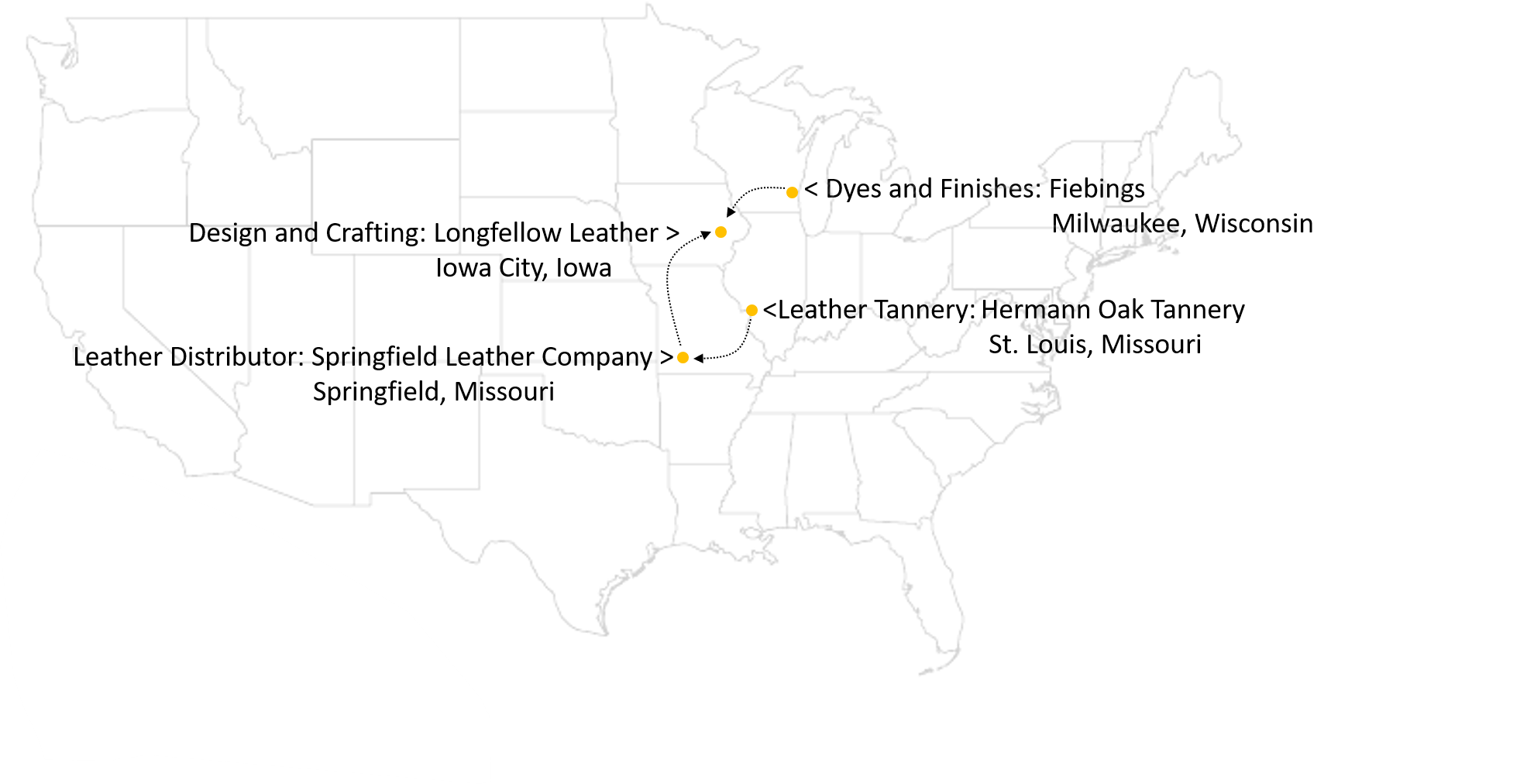
Design and Details
We pride ourselves in our ability to create refined pocket goods that are designed to minimize waste and maximize utility. These products are developed through iteration to arrive at the appropriate solution. For example, when we began to develop our wallet design, our goal was to find a solution that provided the minimum sized wallet that still offered plenty of storage, so the initial design was fitted extremely tight to the dimensions of a standard card. We made a few dozen of these wallets and had friends and family give them a test run. What we found out is, while this design offered a bare minimum dimension for a wallet, it was actually a bit too tight to conveniently remove and insert cards and cash. So, through iteration, we nudged up the dimensions by 3/16″ in all directions, which made all the difference; maximum economy and utility.


The parts and pieces of the wallet are designed based on 1/64 of an inch (a standard measure for leather thickness), even down to the stitch spacing. Each stitch is symmetrical about the corners and lands evenly around the entire perimeter. The pocket height is 1/3 of the total wallet length, and even the bends at corners and edges respond to the overall portions of the wallet. Each wallet can be cut from an 8″ x 8″ piece of leather, with 90% material efficiency. A harmonious little design. It feels great in your hand and comfortable in your pocket.
We’re not going to tell you how to use your wallet, but here’s how it was designed to be used. The intent was to offer a minimum sized wallet, while still providing plenty of space to keep cards and cash. It seems that most items kept in a personal wallet are rarely used, and many of us only access one or two cards on a regular basis. The intent is to keep your most used cards and a little cash in the two pockets, and everything else is conveniently tucked away in the two hidden pockets, accessed through the center slit. This is a great spot for card readers and insurance cards. The wallet design can comfortably hold 10 cards and wad of folded cash.
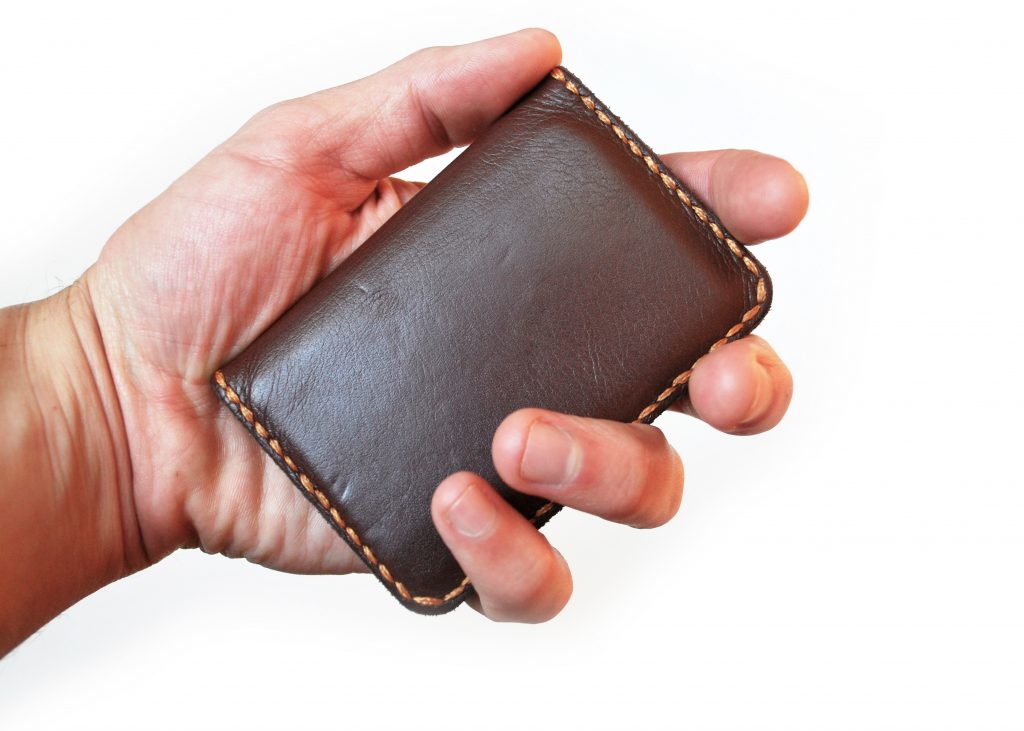

Resources
There are so many great resources for learning in the leather crafts trades. Online videos and manuals have provided me with vast amounts of information. The following is a list of some of my favorites:
http://www.hermannoakleather.com/
https://www.stockandbarrelco.com/
https://littlekinggoods.com/
https://www.ianatkinson.net/leather/
